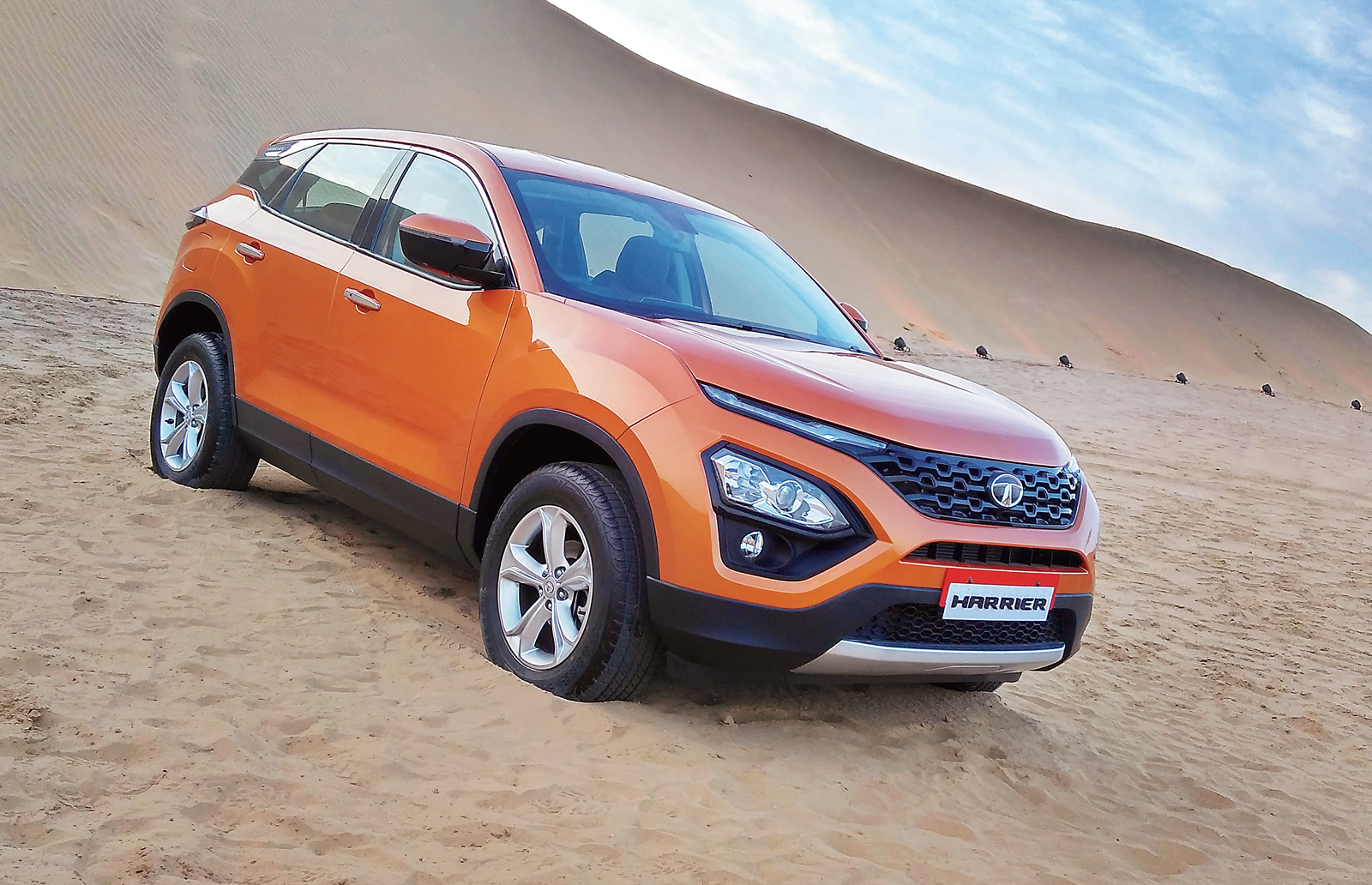Ever since Tata Motors bought over Jaguar Land Rover (JLR) a decade ago, it had been expected that sooner or later Tata’s SUVs would also be based on the same underpinnings as those of its British subsidiary, the maker of Land Rover and Range Rover sport-utility vehicles. So, when the parent company said that it had built a concept called HX5 based on the Omega ARC architecture derived from Land Rover’s D8 platform, and displayed it at Auto Expo 2018 in Greater Noida, it created quite a buzz.
Now, in its final shape, the HX5 is the Tata Harrier and ready to go on sale next month. t2oS got an opportunity to go chasing the dunes in a pre-production model and found a vehicle that could change the equations in the mid-price SUV market.
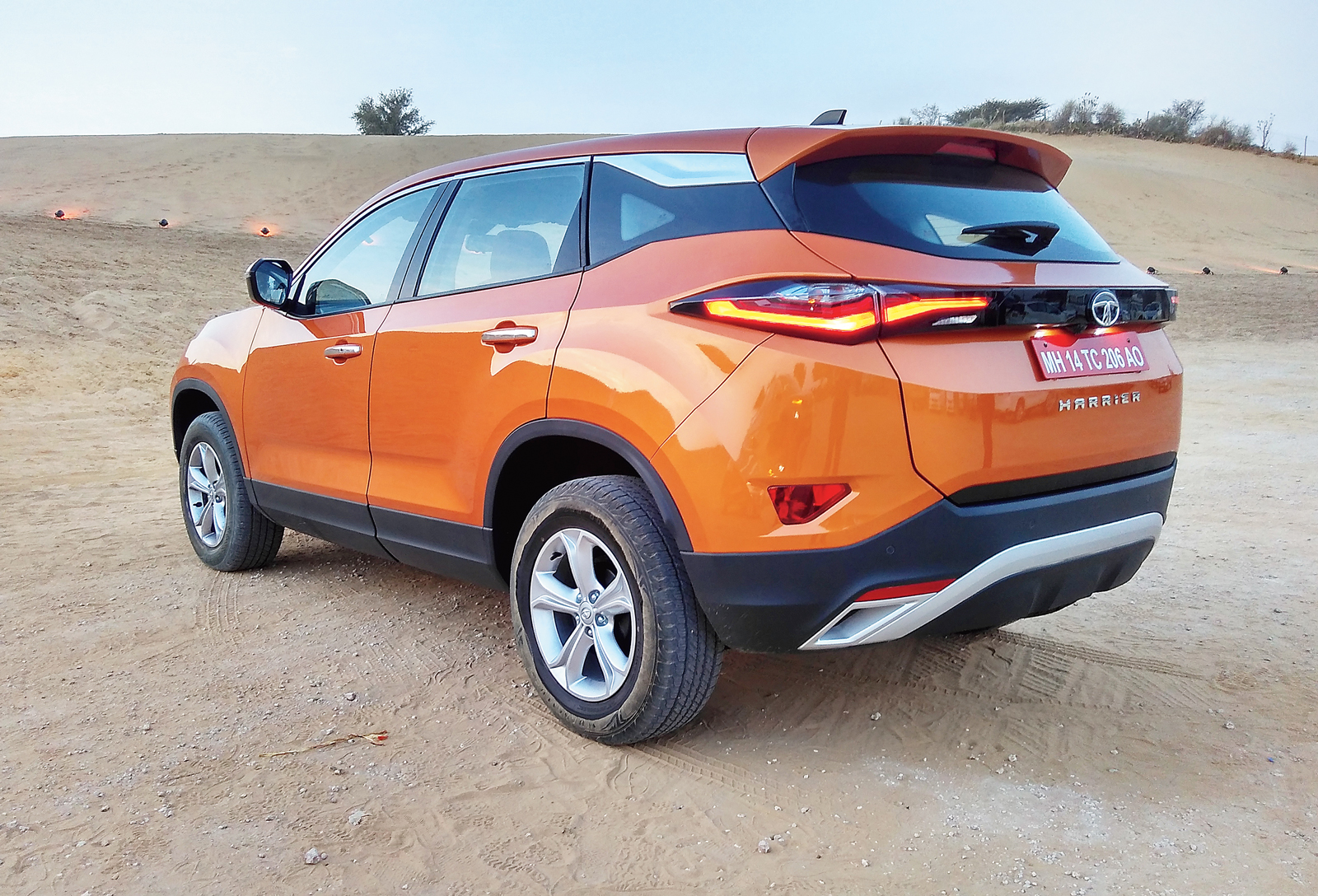
Abhijit Mitra
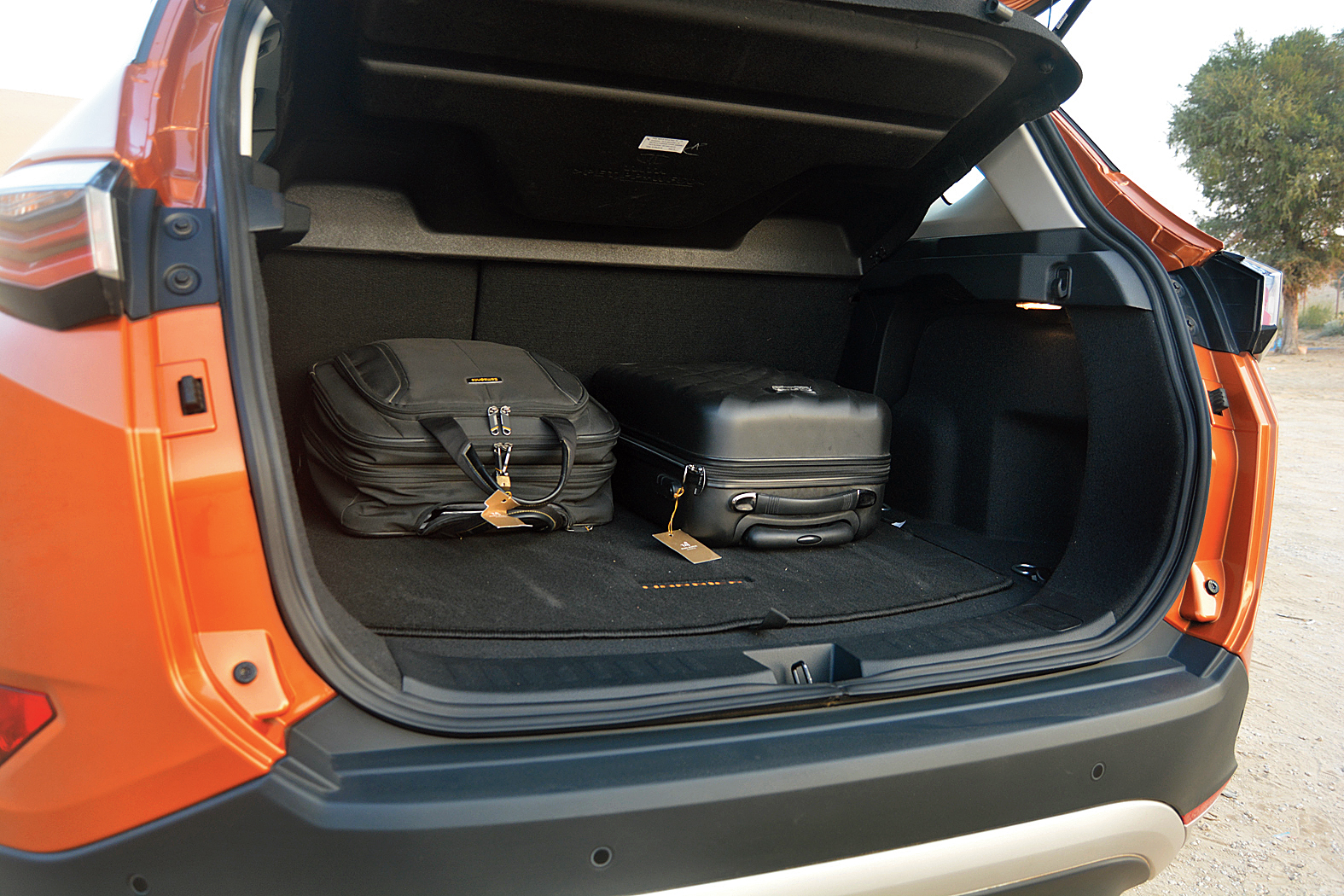
The boot is easy to load and has a flat floor. There’s a pair of compartments under the floor as well Abhijit Mitra
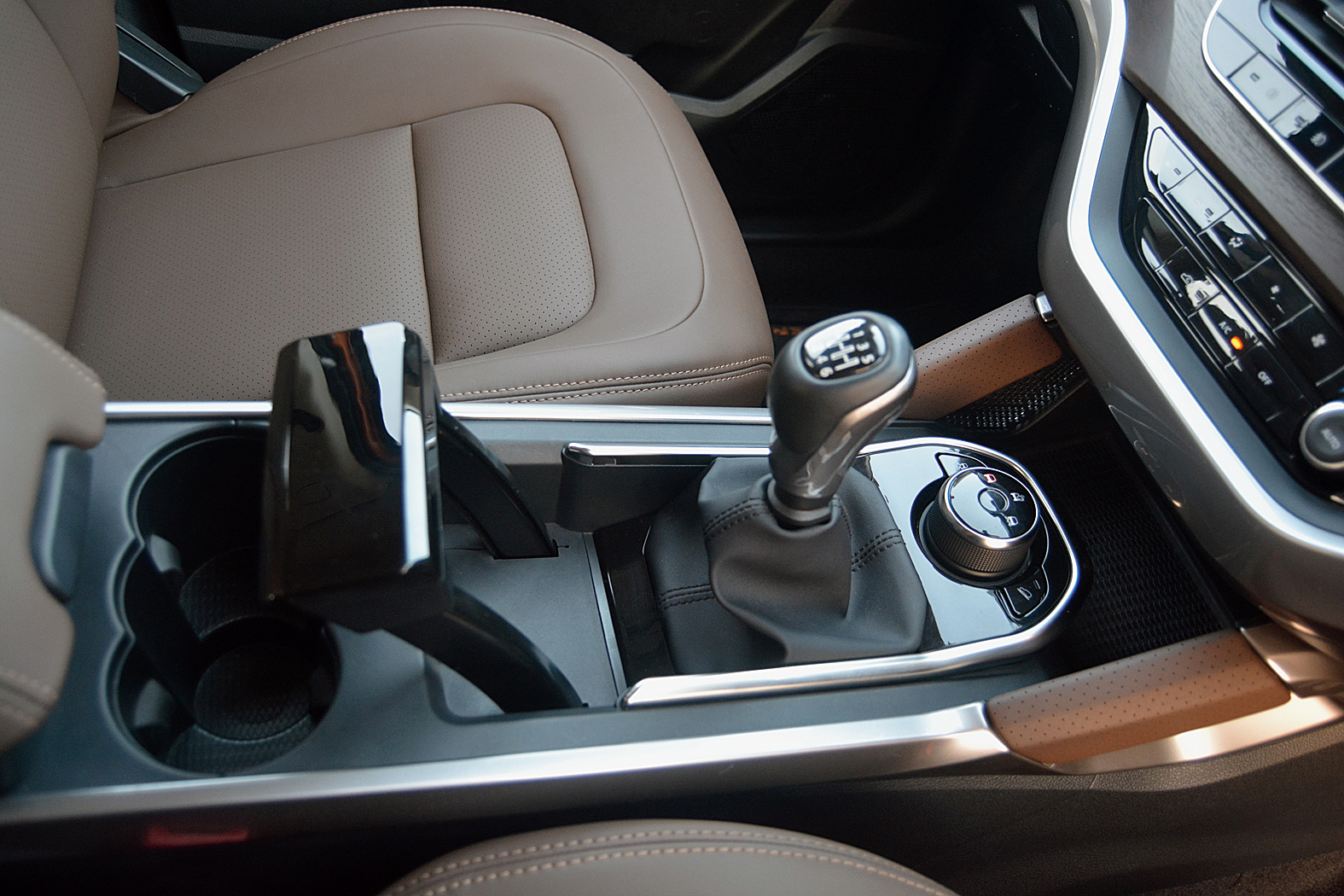
The Harrier’s handbrake looks like an airline throttle Abhijit Mitra
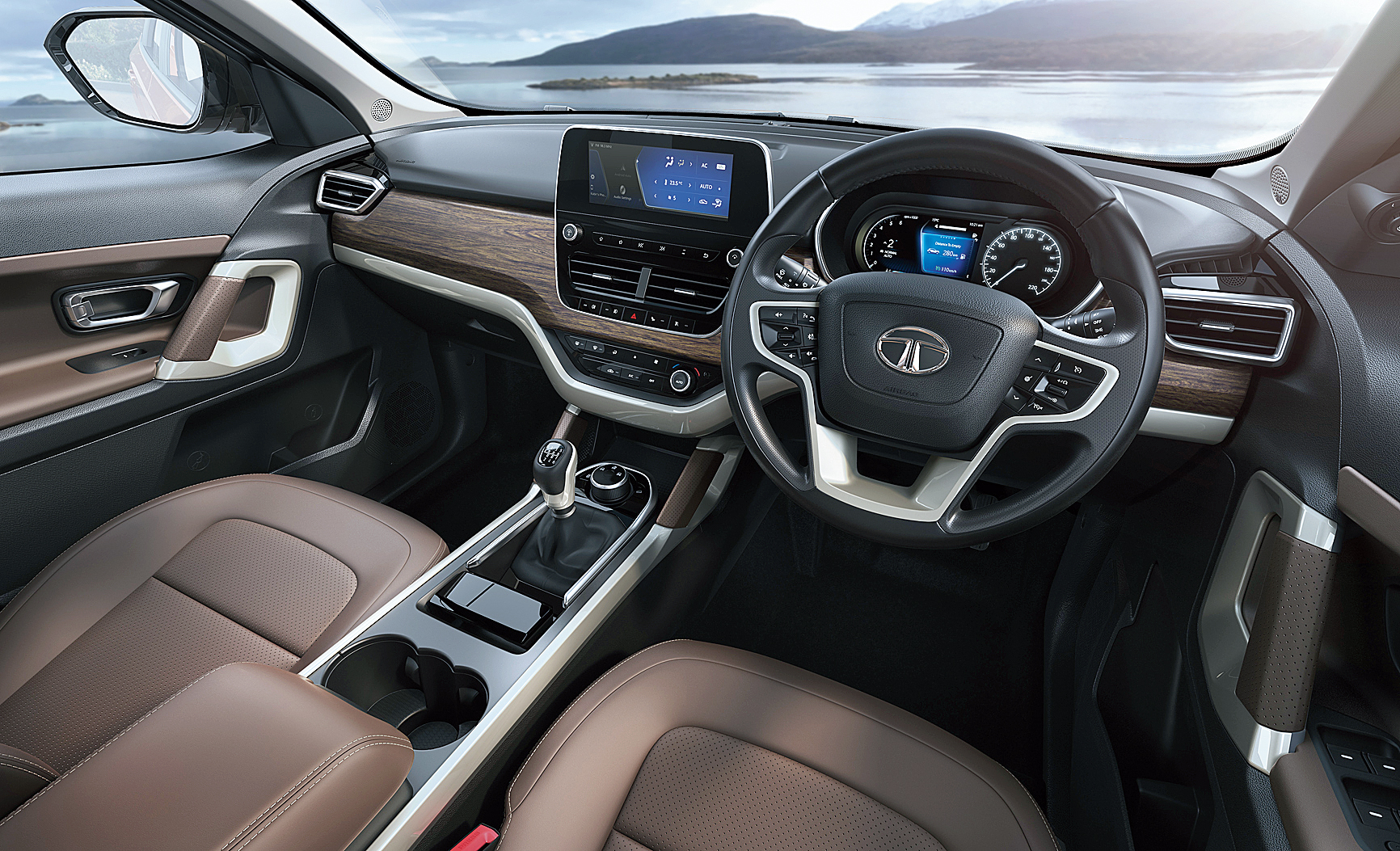
The dash looks good with dark faux wood, black and brushed aluminium finish Abhijit Mitra
THE EXTERIORS
It may not be obvious at first sight, but a relook shows up the similarities with the Land Rover Discovery Sport and the Range Rover Evoque, both of which are based on the same platform. The planted stance, the rising belt line, the roof that slopes down to the spoiler on the tailgate, and the resultant tapering glass area are design elements that are shared with those vehicles.
There’s black cladding all round, both on the front and rear bumpers as well as on the flanks and in the wheel arches, that hides some of the height of the vehicle. There are brushed aluminium highlights in the front and back that look like scuff plates and makes the SUV appear purposeful. The slit daytime running lights (DRL) and wraparound tail lamp cluster give the SUV a stylish look. Bringing a surprise element to the design is the headlamp cluster, which has been moved to where one would normally expect the fog lamps.
Apart from the bright orangish colour, Calisto Copper, there is little on the car that’s blingy. Shiny chrome has been used very judiciously, being replaced instead by a much more muted brushed aluminium finish and blacks. Seventeen-inch alloys with 235/65 rubber fill out the wheel wells nicely. The Harrier gets a clear thumbs-up in the looks department.
ENGINE AND GEARS
The only engine on offer in the Harrier is a 1,956cc, turbocharged, four-cylinder diesel. It is a very tractable piece of kit. Thanks to the variable vane turbo, power delivery is directly in proportion to the throttle inputs and, hence, predictable across the rev range. Peak torque of 350Nm is available from a fairly low engine speed range of 1,750rpm to 2,500rpm. So driving the Harrier is easy at pretty much any speed. It is best, however, not to push the engine too close to its limit around 4,000rpm. While the diesel thrum isn’t disturbing at low revs, nearer the peak engine speed a fair bit of it seeps into the cabin despite the double firewall being used to keep out the sound.
Considering the torque, there’s not too much of a need to play around with the six-speed gearbox. But it’s smooth enough, so there’s no problem should one have to.
RIDE AND HANDLING
The Harrier, in its final form, is a five-seater SUV with a unitary, or monocoque structure, which means that rather than a separate chassis for bolting the body onto, the supporting structure is built into the frame of the vehicle. That has not only helped bring down the overall weight, but also improved the overall rigidity of the body and reduced flex. Add to that front-wheel drive, and it handles much like a car despite its size, height and the fact that it stands fairly high off the ground. It remains poised during direction changes and on fast sweeping bends too. The power steering is nicely weighted and also tells the driver what’s going beneath the wheels.
The ride is very impressive too. Independent front suspension with a twist-blade setup at the rear helps iron out all but the biggest bumps and the wide tyres take care of the smaller ruts quite easily.
The brakes are grippy and progression is linear. There are three drive modes — City, Eco and Sport for the engine. There is hill descent and hill hold too.
The stability programme has Wet and Rough settings along with Normal.
The car climbs to highway speeds and cruises very smoothly with the engine ticking over at barely 2,000rpm. It’s got the legs.
THE INTERIORS
The black-and-brown colour scheme of the interiors is on the darker side but the layout is clean and uncluttered. The top-end model we drove has leather seats (it’s fabric in the entry level model), leather-wrapped steering wheel and gear shift grip. The door handles too get the same material.
The dash looks good with the dark faux wood, black and brushed aluminium finish. A floating section with the 8.8-inch touchscreen infotainment system (seven-inch ones with fewer functions on lower models) has pride of place in the centre and a smaller one is for the instrument cluster. A nice touch is that for things like navigation, the information on the centre screen also shows on the instrument cluster, making it easier to read while driving.
The front seats are well bolstered and supportive while the rear one is flatter but equally good. In fact, even sitting in the middle at the back is quite comfortable. The Harrier has a longish wheelbase (distance between the centres of the front and rear wheels) of 2,741mm. That creates a fair bit of room inside. So, not only is there adequate space in front, rear legroom, even with the front seat pushed all the way back, is generous.
Boot space is an adequate 425 litres and goes up with the middle seats folded down. There are lots of cubby holes for phones, chargers and maps and other small items.
While the overall feel and most of the touch points are nice, some of the plastic bits can do with improvement to be consistent with the rest of the interiors. Also, the USB ports front and back, the auxiliary port are difficult to see and reach. The 12V socket is inside the central arm rest.
The FINAL CALL
The Harrier has a lot of things going for it. It boasts of tested and proven underpinnings, good looks, road presence, loads of space, excellent ride and a competent engine. Some plastic bits could be better, though.
The absence of a 4x4 option means it’s not a go-anywhere vehicle and should be bought for tarmac use. The expectation is that prices would start around Rs 14 lakh and go up another couple of lakhs to the top end. At that range it makes a fair bit of sense. There is also no option yet for those looking for an automatic transmission.
THE HARRIER IN NUMBERS
Form: Midsize, front-wheel drive SUV with unitary construction
LxBxH (mm): 4,598 x 1,894 x 1,706
Ground clearance (mm): 205
Kerb weight (kg): 1,675
Engine: 1,956cc, 4-cylinder, turbocharged diesel
Max power (ps@rpm): 140@3,750
Max torque (Nm@rpm): 350@1,750-2,500
Transmission: 6-speed manual
Wheels and tyres: Alloy wheels with 235/65R17 tubeless radials (Spare tyre: 235/70 R16 on steel wheel)
Drive modes: Eco, City, Sport
Stability programme terrain response modes: Normal, Wet, Rough
Expected price: Rs 14 lakh onwards

